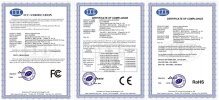- Joined
- Mar 15, 2019
- Messages
- 6
- Reactions
- 6
The ALIENTECH DUO II is a potent and adaptable signal booster that can help your DJI drone's wireless signal have a longer range and be more stable. This dual-band signal booster has a transmission gain of 28-30 dBi and a receiving gain of 23-25 dB, and it is compatible with the 2.4 and 5.8 GHz frequency bands. For use with well-known DJI drone models like the Mavic Pro, Phantom 3/4, Inspire 1/2 Pro, and Matrice 100/300/200/210/600 Pro, this makes it perfect.
The Alientech DUO II's capacity to enhance controllability and extend flight range is one of its main advantages. With its exceptional anti-interference performance, you can easily exceed your drone's flight limit and enjoy a stable, smooth flight even in areas with high interference levels.
The Alientech DUO II is made to be portable and simple to use. Its compact size and quick release feature make it simple to store and transport, and its integrated rechargeable lithium batteries offer continuous use for more than 300 minutes. It is the perfect accessory for both professional and recreational drone pilots because of this.
Therefore, the ALIENTECH DUO II is your best option if you're looking for a dependable and efficient way to improve the wireless signal on your DJI drone. You can expand your drone flying experience thanks to its potent transmission and reception abilities.



The Alientech DUO II's capacity to enhance controllability and extend flight range is one of its main advantages. With its exceptional anti-interference performance, you can easily exceed your drone's flight limit and enjoy a stable, smooth flight even in areas with high interference levels.
The Alientech DUO II is made to be portable and simple to use. Its compact size and quick release feature make it simple to store and transport, and its integrated rechargeable lithium batteries offer continuous use for more than 300 minutes. It is the perfect accessory for both professional and recreational drone pilots because of this.
Therefore, the ALIENTECH DUO II is your best option if you're looking for a dependable and efficient way to improve the wireless signal on your DJI drone. You can expand your drone flying experience thanks to its potent transmission and reception abilities.
- Dual-band signal booster ALIENTECH DUO II supports the 2.4G and 5.8G frequency bands.
- The wireless signal strength, transmission distance, and signal reception stability of DJI drones can all be improved.
- The receiving gain is 23–25 dB, while the transmission gain is 28–30 dBi.
- It has excellent anti-interference performance, increases flight distance while enhancing controllability.
- The booster is portable, has a quick release feature, and is small in size.
- It has built-in lithium rechargeable batteries that can run continuously for more than 300 minutes.
- Wi-Fi and the OcuSync Protocol are supported.
- Popular DJI drone models like the Mavic Pro, Phantom 3/4, Inspire 1/2 Pro, and Matrice 100/300/200/210/600 Pro are all compatible with it.
- It is an ideal accessory for professional and hobbyist drone pilots.



Last edited:















